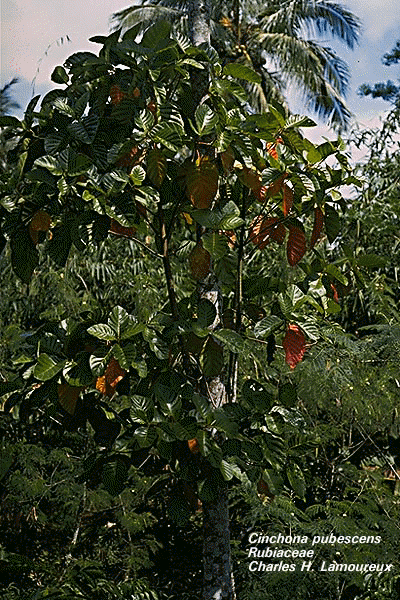
History:
Quinine is obtained from the bark of the Cinchona tree that is found in the Andes mountain range of Peru and Ecuador. The Peruvian Indians used an infusion of Cinchona bark to treat fever and consequently it was discovered to be an effective treatment and preventative for malaria.
This medication was introduced into Europe in the 17th century, but at that point, no one actually knew that the potent ingredient was the alkaloid quinine.
It was not until 1820 that quinine was isolated by French Chemists J.B Caventou and PJ Pelletier. The destruction of the Cinchona tree, due to the demand of anti-malarial treatments, made them so rare that a way of synthetically producing quinine was needed. Robert Woodward and William Doering achieved this in 1944 by synthesising quinine from coal tar.
.
This image is provided and copyrighted by Raintree Nutrition Inc. All Rights Reserved: http://www.rain-tree.com Use of Quinine:
Use of Quinine:
Before the development in recent years of more effective synthetic drugs such as chloroquine, quinine was the specific agent in the treatment of malaria. Malaria is caused by a parasite plasmodium vivax, which is carried by mosquitoes in tropical climates. It causes severe fevers that go through cycles of 2 to 3 days, passing through hot (up to 107F) and cold phases.
These alkaloids are effective in combating malaria because they are able to bind strongly to blood proteins, and form complexes, which are toxic to the malarial parasite. They are also antipyretic so permit the patients to pass through the critical stages of lethal body temperature.
 In recent years, however, certain strains of the malarial
parasite Plasmodium falciparum have developed a resistance to chloroquine, so
quinine is again becoming the preferred anti-malarial drug in certain areas of the world.
In recent years, however, certain strains of the malarial
parasite Plasmodium falciparum have developed a resistance to chloroquine, so
quinine is again becoming the preferred anti-malarial drug in certain areas of the world.
This has been reinforced by the first stereoselective "total synthesis" of Quinine by Gabriel Stork and co-workers at Columbia University just last year (Philip Ball; April 13th 2001; http://www.nature.com/nsu)
![]()
References:
http://www.auu.edu.au/Forestry/wood/nwfp/quinine/Quinine.html
http://www.encyclopedia.com/html/q1/quinine.asp
Molecular Structure:
Joe Lenthall, Magdelan college oxford: http://www.chem.ox.ac.uk/mom/quinine/Quinine.htm#